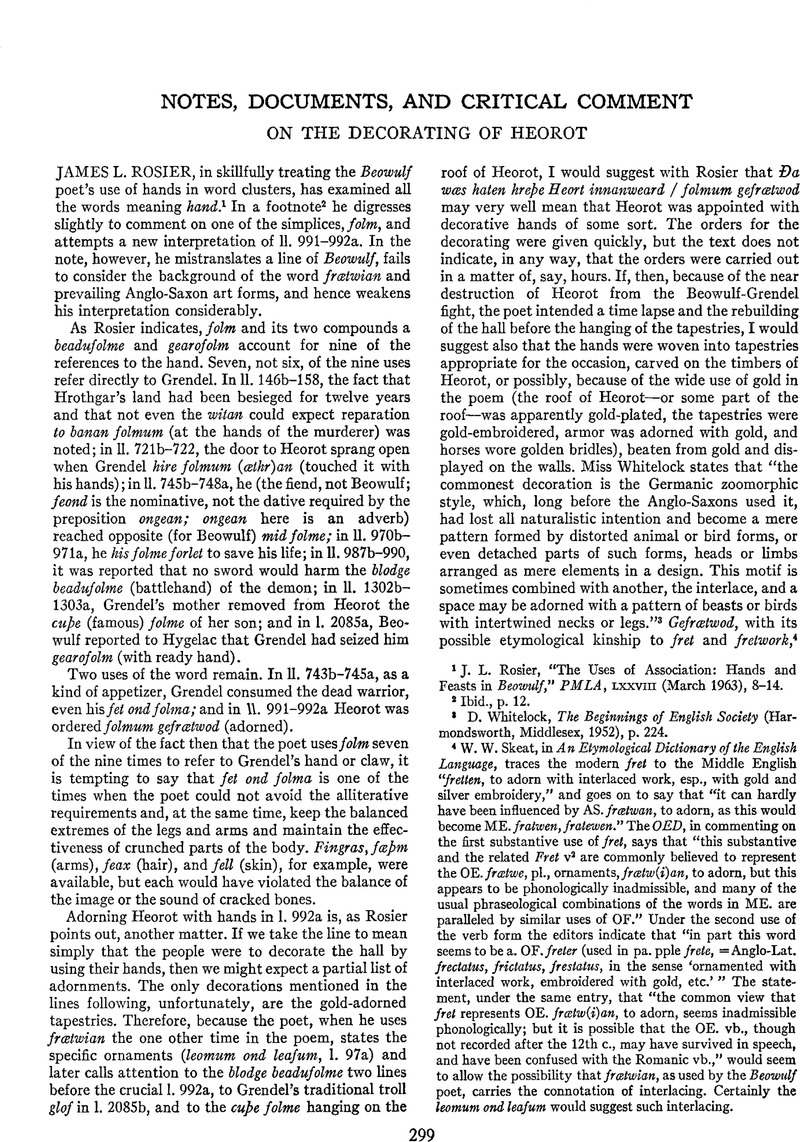No CrossRef data available.
Article contents
On the Decorating of Heorot
Published online by Cambridge University Press: 02 December 2020
Abstract

- Type
- Notes, Documents, and Critical Comment
- Information
- Copyright
- Copyright © Modern Language Association of America, 1965
References
1 J. L. Rosier, “The Uses of Association: Hands and Feasts in Beowulf,” PMLA, lxxviii (March 1963), 8–14.
2 Ibid., p. 12.
3 D. Whitelock, The Beginnings of English Society (Harmondsworth, Middlesex, 1952), p. 224.
4 W. W. Skeat, in An Etymological Dictionary of the English Language, traces the modern fret to the Middle English “fretten, to adorn with interlaced work, esp., with gold and silver embroidery,” and goes on to say that “it can hardly have been influenced by AS. frœtwan, to adorn, as this would become ME. fratwen, fratewen.” The OED, in commenting on the first substantive use of fret, says that “this substantive and the related Fret v2 are commonly believed to represent the OE. frœtwe, pl., ornaments, frœtw(i)an, to adorn, but this appears to be phonologically inadmissible, and many of the usual phraseological combinations of the words in ME. are paralleled by similar uses of OF.” Under the second use of the verb form the editors indicate that “in part this word seems to be a. OF. freter (used in pa. pple frete, = Anglo-Lat. frectatus, frictatus, frestatus, in the sense ‘ornamented with interlaced work, embroidered with gold, etc’ ” The statement, under the same entry, that “the common view that fret represents OE. frœtw(i)an, to adorn, seems inadmissible phonologically; but it is possible that the OE. vb., though not recorded after the 12th c., may have survived in speech, and have been confused with the Romanic vb.,” would seem to allow the possibility that frœtwian, as used by the Beowulf poet, carries the connotation of interlacing. Certainly the leomum ond leafum would suggest such interlacing.
5 See, for example, R. H. Hodgkins, A History of the Anglo-Saxons (Oxford, 1959), ii, plates 62, 56, 85, 83, 87.


